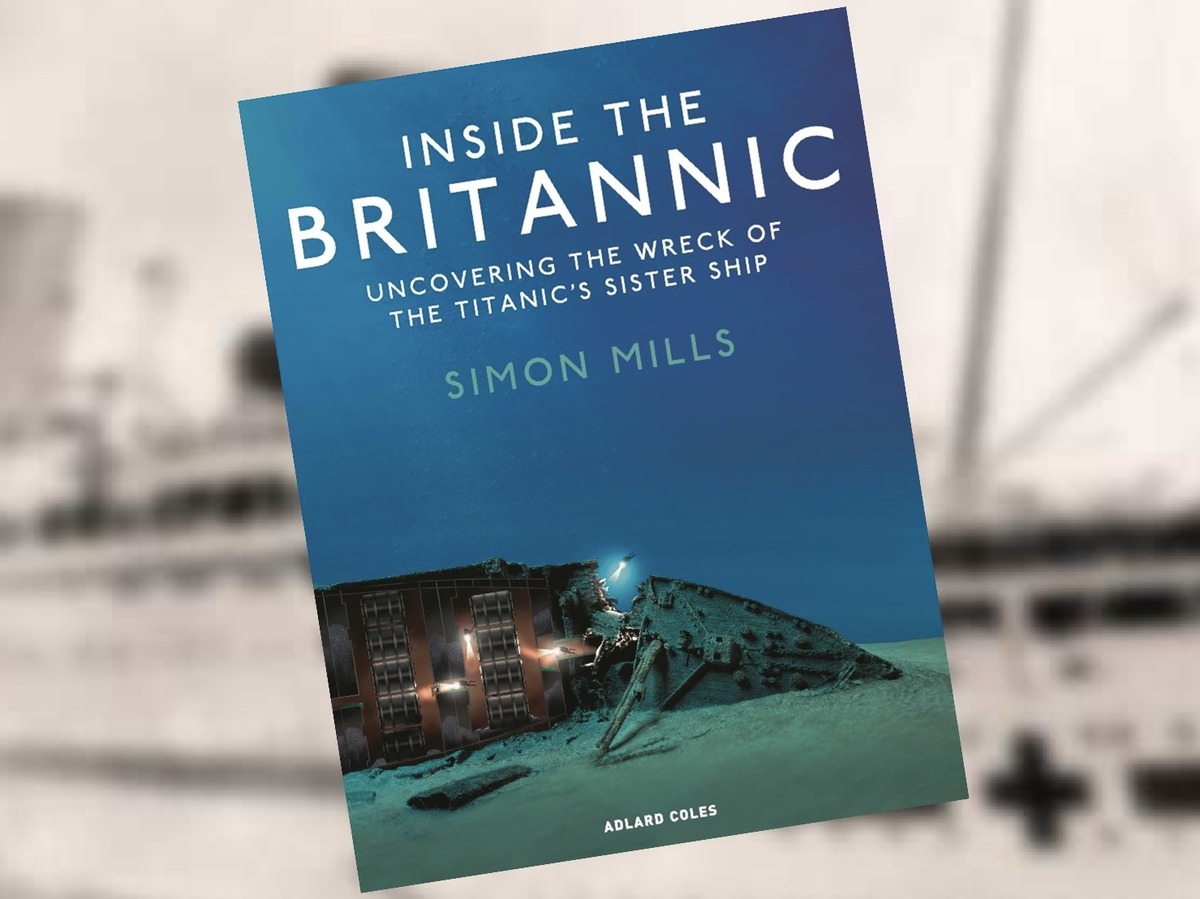This post contains affiliate links. If you click one, I may earn a commission at no cost to you. As an Amazon Associate, I earn from qualifying purchases.
Britannic—Titanic’s little sister. The third Olympic-class liner, she suffered the same fate as her older sibling and sank near the Greek island of Kea on November 21, 1916. There was a (highly fictionalized) TV movie in 2000, but Britannic has still been largely overshadowed by Titanic in popular culture. But ship nerds (I use that term affectionately) know the ship and her story. I still remember my mom telling me about the Britannic when I was a kid, and I’ve been fascinated with Britannic ever since.
Inside the Britannic by Simon Mills tells the story of this lost Olympic-class liner, and takes readers deep inside her wreck. Per the book’s description:
Simon Mills bought the wreck of the Britannic in 1996 and has spent more time exploring it than anyone else. Inside the Britannic is the sum of decades of work covering every inch of the shipwreck as he searches for answers to century-old questions, and discovers new mysteries to solve. Simon takes a forensic approach but this book is more than just the autopsy report of a ship; it is a fascinating survey supported by stunning, never-before-seen photos from inside the wreck, archival blueprints and original technical schematics of specific areas, and specially recreated digital images of how the ship would have looked.
Many thanks to NetGalley and Osprey Publishing for providing an advance copy of this book to read and review.
Book Summary
Inside the Britannic tells the story of Titanic’s equally ill-fated sister ship. Still under construction at Harland & Wolff in April 1912, the builders modified Britannic’s design in the wake of the disaster. While externally very similar to the earlier Olympic and Titanic, this new ship was very different internally. With a double hull and extended watertight bulkheads—plus massive Armstrong gantry davits to hold more lifeboats—the Britannic was the pinnacle of British marine engineering and shipbuilding.

Pressed into service as a hospital ship during World War I, the third Olympic-class liner never fulfilled her intended purpose to carry passengers across the Atlantic in unparalleled luxury. Britannic struck a mine on November 21, 1916 and sank in just 55 minutes—much quicker than it took Titanic to sink. How was this possible? That’s what Simon Mills wants to find out.
Over the course of nearly three decades, Mills has exhaustively researched and investigated the wreck. Experienced divers have gone down to the Britannic and thoroughly documented her saddle oyster-encrusted hulk. Looking for clues, they’ve penetrated deep into the ship—a feat made significantly easier given that she’s laying on her starboard side. Mills and his teams document the Britannic’s interiors from stem to stern and make some rather interesting discoveries along the way.
My Thoughts
This is an incredible book. Full stop.
Simon Mills does a great job of covering the history of the Britannic—from her construction and short career to her afterlife as a Mediterranean shipwreck. He details the changes Harland & Wolff made to the ship following the Titanic disaster to make her safer and early explorations of the wreck following its 1975 discovery by Jacques Cousteau. Inside the Britannic is an incredible resource for all those interested in the last Olympic-class liner.
I found Mills’ descriptions of the various diving expeditions to the Britannic fascinating. His approach is scientific, methodical, and thorough. The book also reads like a sort of adventure travelogue, which in some ways I suppose this is. I found myself sharing Mills’ successes and disappointments as he and his various teams penetrated the wreck over the decades. The result is a thorough documentation of many of Britannic’s interior spaces. The divers were the first people to see these since November 21, 1916.

As with pretty much every Osprey publication, this book is beautifully illustrated (tabletop wargamers know what I’m talking about). There are enough historic photographs, diagrams, and schematics throughout to make any ship nerd happy. But the Britannic wreck photos are undeniably the highlight of this book. There are many high-quality, full-color photographs throughout that show the ship’s interior in stunning detail. My jaw actually dropped several times when coming across a particularly awesome set of photos (like the Turkish Baths and Reciprocating Engine Room).
Conclusion
Inside the Britannic is a must-read for any ship nerd. Mills’ account of the wreck’s exploration is vivid and engaging, and the photos are incredible. His passion for the ship and her history is clear.
Another thing is also clear—while Britannic is well preserved in some areas, she is rapidly deteriorating in others. No one knows how long it’ll be until the ship collapses in on herself. Inside the Britannic captures the ship as she is now—a largely complete and intact shipwreck frozen in time for over 100 years.

Leave a Reply